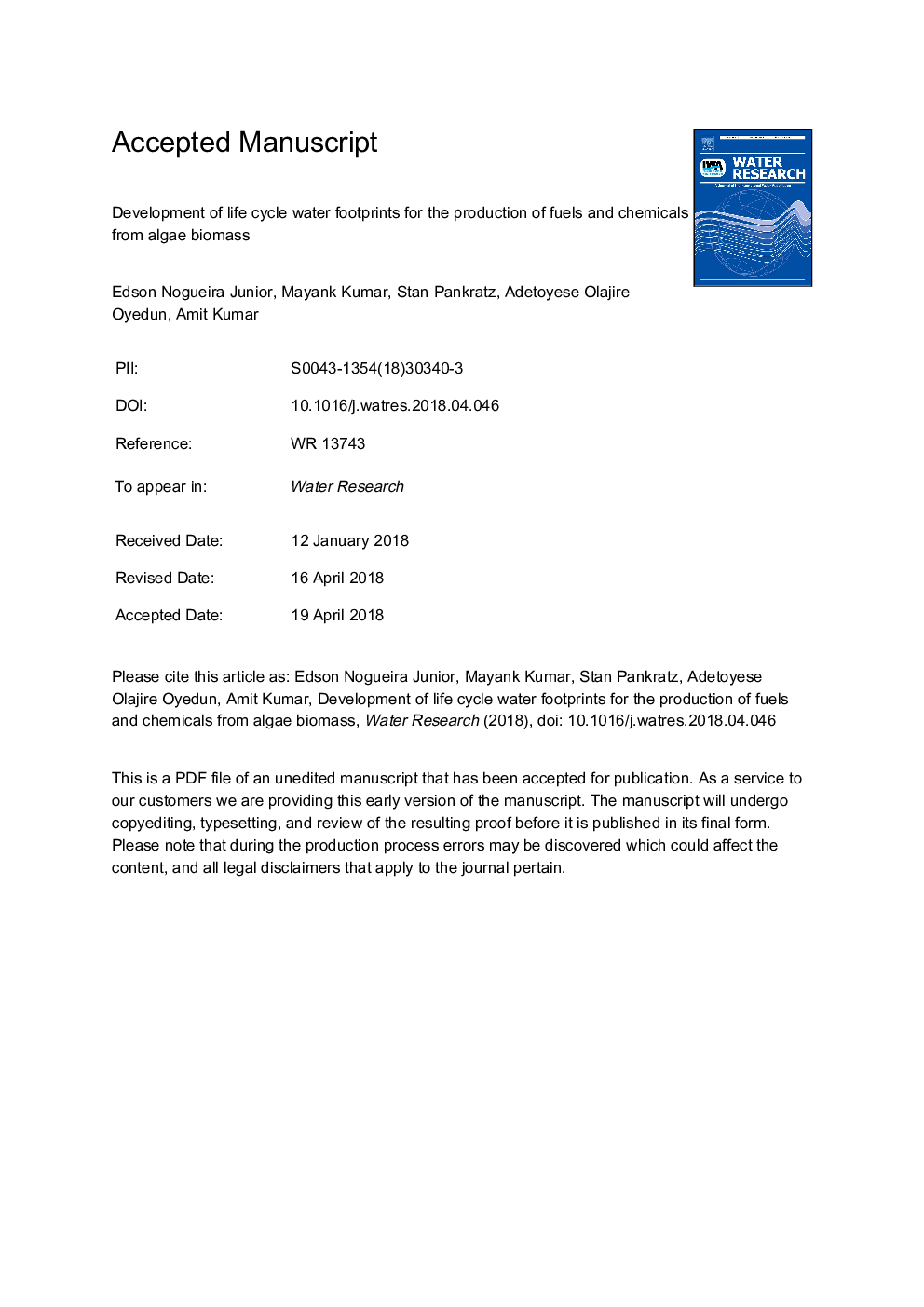| Article ID | Journal | Published Year | Pages | File Type |
|---|---|---|---|---|
| 8873862 | Water Research | 2018 | 51 Pages |
Abstract
This study develops life cycle water footprints for the production of fuels and chemicals via thermochemical conversion of algae biomass. This study is based on two methods of feedstock production - ponds and photobioreactors (PBRs) - and four conversion pathways - fast pyrolysis, hydrothermal liquefaction (HTL), conventional gasification, and hydrothermal gasification (HTG). The results show the high fresh water requirement for algae production and the necessity to recycle harvested water or use alternative water sources. To produce 1â¯kg of algae through ponds, 1564â¯L of water are required. When PBRs are used, only 372â¯L water are required; however, the energy requirements for PBRs are about 30 times higher than for ponds. From a final product perspective, the pathway based on the gasification of algae biomass was the thermochemical conversion method that required the highest amount of water per MJ produced (mainly due to its low hydrogen yield), followed by fast pyrolysis and HTL. On the other hand, HTG has the lowest water footprint, mainly because the large amount of electricity generated as part of the process compensates for the electricity used by the system. Performance in all pathways can be improved through recycling channels.
Related Topics
Physical Sciences and Engineering
Earth and Planetary Sciences
Earth-Surface Processes
Authors
Edson Nogueira Junior, Mayank Kumar, Stan Pankratz, Adetoyese Olajire Oyedun, Amit Kumar,
